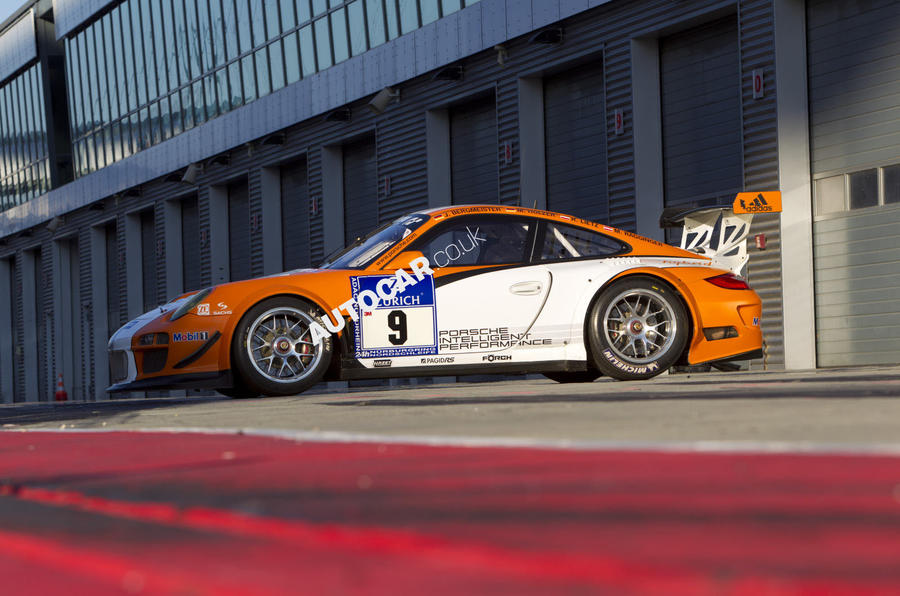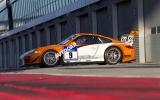What is it?
Right now, the GT3 RH is still just a racing-cum-test development program, a toe in the water regards Porsche’s future road car development plans. But be in no doubt, it’s also a very loud, very clear, slightly scary example of the way in which Porsche is thinking right now when it comes to power-trains. Hybrids, if this monster of a machine is anything to go by, are quite clearly the future for companies like Porsche and Ferrari et al.
As the GT3 RH’s chief race engineer, Owen Hayes, puts it: “I regard the whole hybrid thing a bit like mobile phones from 20 years ago. Some people said they would never catch on but look where we are now. For endurance racing in particular, that’s exactly how I feel about hybrids.”
And for road car use? “What’s not to like about hybrid power for high performance road cars in future, even if there is still some way to go right now. Ask me in five years time…” he beams, with a great big grin across his face.
So what sort of machine are we really talking about here, and how is it likely to influence Porsche’s future road car development? In simple terms the GT3 RH uses a conventional 473bhp flat six engine mounted at the back, powering its back wheels, while over the front axle it has a further pair of 60kw electric motor that power the front wheels, each developing 80bhp. Which means it has 633bhp in total.
The system works by generating power primarily via the car’s brakes, and it then stores this power in a whopping great flywheel that sits abut six inches to the right of your backside. And when you press the magic button, with the flywheel spinning at up to 40,000rpm, it then redeploys the stored power back to the front axle wheels and, presto, you get a monster great hit of acceleration for 6-8 seconds – perceptible in any gear, and at any speed.
The really clever bit, though, is that it generates its power almost exclusively via the brakes, not via the engine or a bank of batteries, as in the 2009 F1 systems. And this means it can regenerate full power almost as fast as you can burn it. One big stop from sixth to third gear and you can virtually recharge the system – and that makes it much more efficient than the KERS that was used in F1.
What’s it like?
Quite spooky, incredibly efficient but also just very, very exciting to use. When you press the magic button for the first time it actually feels a bit like a cheat, the rush of extra acceleration comes at you that fast. But when you get used to the way it works – the way it can alter not just your speed along a straight but also the handling balance mid corner even – the hybrid GT3 R is quite clearly a highly significant piece of kit; the beginning of a brand new era.
In practice, the system recharges so fast that it is constantly available, simply because unless you forget to press the brakes for some strange reason, you are always recharging the system. So it’s a win-win situation, except for two things.
One, weight; all up the system adds 150kg to the weight of a regular GT3 R (1200kg). Two, at the moment the only way to ensure that a proper recharge takes place is to brake very hard indeed. Use the brakes like you would on the road and, as it stands, the system wouldn’t recharge properly, which can cause all sorts of overheating issues.

























Join the debate
Add your comment
Re: Porsche 911 GT3 R Hybrid
I can see it working in racing with high use of brakes but modern efficient driving says braking is a waste of fuel. Also most hybrids or electric cars already use engine breaking to send power back to the batteries. Here is a flywheel instead of a battery. Like to see it replace some power in a racer and not add more power too it. Also like the TDI Audis in Le Mans, is not the idea to also boost range without needing to refuel as often. I can see Porsche making sure it finishes at this years Le Mans. Nice thing is you can locate it anywhere to balance out the front or rear engine. No need to push the transmission around to achieve the same. Might we see this in next years F1 ? Think of the benefit to a plane taking off or a train -both brake heavily and would benefit from a boost from standstill plus no problem with space. Harder with a plane though. Does it replace the old idea of engine breaking to save on the brake pads?
Re: Porsche 911 GT3 R Hybrid
Best hybrid solution i've read so far,but where would the flywheel go in a road car?
Re: Porsche 911 GT3 R Hybrid
No problem with the TC, but not for racing.
That's all.